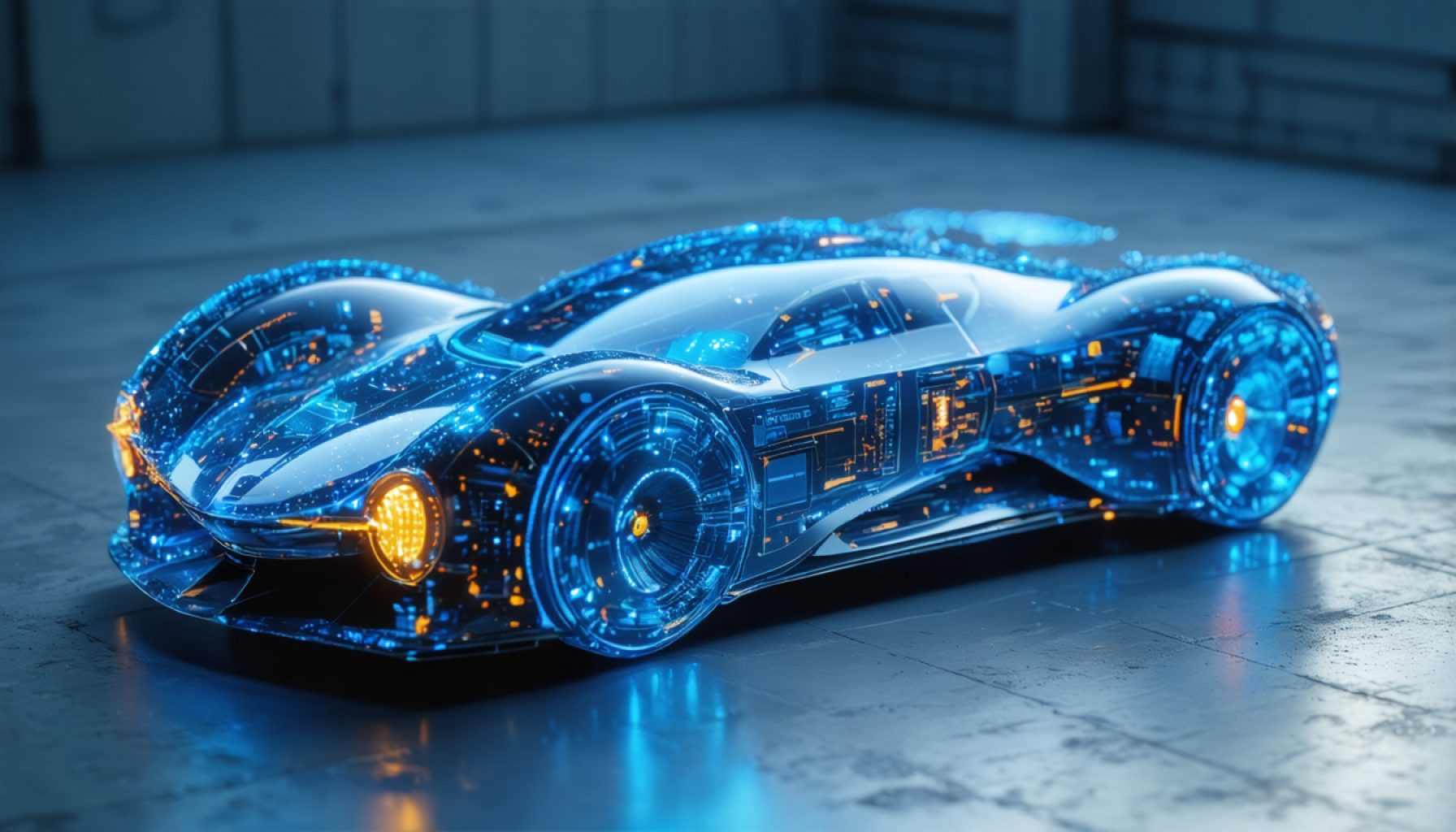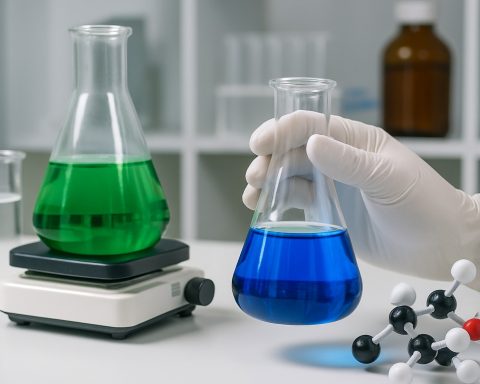- Tianneng is innovating with solid-state batteries, aiming to revolutionize energy consumption with enhanced durability, efficiency, and safety.
- These batteries replace liquid electrolytes with solid ones to mitigate thermal runaway risks, promising quicker charging and improved performance in electric vehicles.
- Tianneng targets China’s two-wheeler electric vehicle market as a niche application for its cutting-edge battery technology.
- The company’s strategy extends beyond battery chemistry, incorporating multiple technologies and intelligent manufacturing processes for sustainability and versatility.
- An integrated ecosystem aligns battery management, recycling, and R&D, transitioning Tianneng towards becoming a leader in sustainable mobility solutions.
- Tianneng’s efforts are a testament to strategic foresight and reflect a promise for a sustainable and intelligent energy future.
Technological landscapes are awash with innovation, and in the world of batteries, the power to electrify our futures lies in the heart of Asia. Tianneng unleashes a bold leap into the future with its pioneering solid-state batteries, poised to redefine the way we move. These cutting-edge powerhouses are more than just an incremental upgrade; they represent a seismic shift addressing the major demands of modern energy consumers—durability, efficiency, and safety.
Imagine a world where electric vehicles charge in the blink of an eye, traverse longer distances without a second thought, and remain impervious to the extremes of heat and cold. This vision draws nearer with Tianneng’s latest breakthrough, which swaps liquid electrolytes with solid counterparts, mitigating risks of thermal runaway—a dreaded scenario where batteries overheat and pose significant hazards.
Instead of merely riding the waves of innovation, Tianneng is crafting new tides with its bold strategy of incorporating this technology into China’s thriving two-wheeler electric vehicle market. By doing so, they blaze new trails in global research and development while setting a new standard for practical applications in the rapidly transforming landscape of mobility.
Their approach, however, is not confined to revolutionizing battery chemistry alone. Tianneng’s ambitious “multi-technology, full-scenario, and ecosystem-driven” strategy reaches far beyond. By mastering a spectrum of battery technologies that span lead-acid to sodium-ion and leveraging intelligent manufacturing processes, Tianneng ensures that sustainability and versatility steer its journey forward.
At the heart of this transformation is an integrated ecosystem that aligns research and development, smart battery management systems, and recycling procedures—a holistic approach that transitions Tianneng from a traditional battery supplier to a pioneer in sustainable mobility solutions. It’s a vision that doesn’t just respond to current demands but propels the industry toward a smarter, safer, and greener future.
The implications of Tianneng’s innovations extend beyond technological boundaries—they are laying the foundational stones for a new era in transportation. It is a testament to how strategic foresight, when coupled with technological prowess, can craft pathways that are not only more sustainable but also more beneficial for society as a whole.
In a fast-paced world teetering on the brink of a green revolution, Tianneng’s advancements reflect more than just a company’s ambition. They illustrate a commitment—a promise—that intelligent energy solutions are not a far-off dream but a reality materializing today. As Tianneng etches its place at the forefront of this transformation, the march toward a cleaner, more agile world continues, lighting the way for others to follow.
Solid-State Batteries: The Future of Sustainable Mobility Unleashed
Solid-state batteries are making waves as the next big leap in battery technology, offering substantial advantages over traditional lithium-ion batteries. Tianneng’s strides in this front are significant, particularly given their focus on innovating within the Asian market, a region known for pioneering many technological advancements. Let’s delve deeper into the world of solid-state batteries and explore the broader implications of Tianneng’s innovations.
Key Features of Solid-State Batteries
1. Enhanced Safety: Traditional lithium-ion batteries use liquid electrolytes, which are prone to leaks and thermal runaway. Solid-state batteries eliminate this risk by using solid electrolytes, making them inherently safer.
2. Higher Energy Density: Solid-state batteries typically offer greater energy density, allowing for longer battery life in a more compact form. This is crucial for electric vehicles (EVs), which require longer ranges and smaller, lighter batteries.
3. Faster Charging: The solid-state design can support higher currents, enabling faster charging times. EV owners could potentially charge their vehicles in minutes rather than hours.
4. Wide Operating Temperatures: Solid-state batteries perform better across a broad range of temperatures, making them ideal for use in extreme climates.
Real-World Use Cases
– Electric Vehicles (EVs): The automotive industry is the primary beneficiary of solid-state batteries. Companies like Tianneng are focusing on integrating these batteries into two-wheelers, which are popular across Asia.
– Consumer Electronics: With the potential for thinner and lighter batteries, consumer electronics like smartphones and laptops could see significant improvements in durability and battery life.
– Energy Storage Systems: Solid-state batteries offer a promising solution for storage systems that require high capacity and stable operation, such as those used in renewable energy installations.
Market Forecasts & Industry Trends
A report by MarketsandMarkets predicts that the solid-state battery market will grow from $53 million in 2020 to $1.9 billion by 2025, driven by demand for safer, higher-capacity energy storage solutions. The growth is expected to be particularly strong in areas focusing on sustainability and the electrification of transportation.
Controversies & Limitations
While promising, the commercialization of solid-state batteries faces several hurdles:
– Cost: The production cost of solid-state batteries is currently higher than that of traditional batteries. Economies of scale and advancements in manufacturing processes are needed to make them cost-competitive.
– Manufacturing Challenges: The technology requires new manufacturing techniques and materials, posing initial challenges in scaling production without compromising quality and performance.
Insights & Predictions
– Adoption Timeline: Many industry experts believe that solid-state batteries will become commercially viable for mass production by the late 2020s.
– Partnerships and Collaborations: Companies will likely pursue strategic partnerships to accelerate innovation and overcome technical challenges. Tianneng, for example, may collaborate with automakers and tech companies to bring solid-state batteries to market faster.
Pros & Cons Overview
Pros:
– Greater safety and stability
– Longer lifespan and energy density
– Faster charging times
Cons:
– Higher initial costs
– Complex manufacturing processes
Actionable Recommendations
– Stay Informed: For consumers and industry professionals alike, staying updated on the latest developments in battery technology will help gauge when to adopt new solutions.
– Evaluate Needs: Businesses should assess if current battery technologies meet their needs or if it’s beneficial to invest in more advanced options like solid-state batteries for long-term gains.
– Focus on Sustainability: Companies like Tianneng are leading by example in pursuing sustainable practices. Embracing similar strategies can enhance brand reputation and future-proof business operations.
For further reading and updates on emerging technologies, visit Tianneng.
Solid-state batteries promise to revolutionize energy storage and consumption, pushing us towards a future where green technology is not just preferable but standard. As research and investment in this area grow, the dream of a cleaner, more efficient world inches ever closer to reality.







